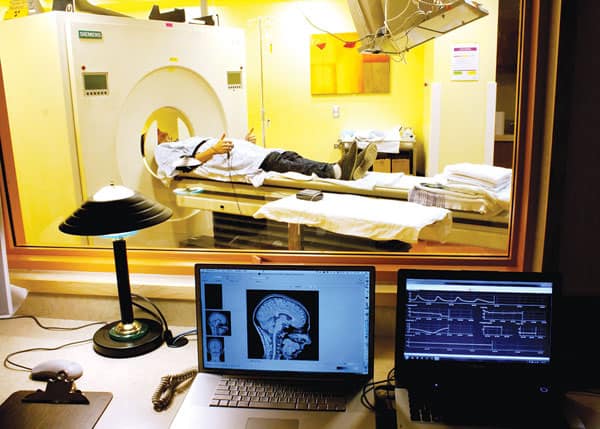
JACOB SEREBRIN
CUP Quebec Bureau Chief
MONTREAL (CUP) — Researchers from McGill University have discovered that music can trigger the brain’s pleasure centres in the same way as food, sex and drugs like cocaine.
According to a study, published in the journal Nature Neuroscience on Jan. 9, music can release the neurotransmitter dopamine, a chemical in the brain that is associated with pleasure and reward. While dopamine is normally released by behaviours associated with survival, it can also be triggered by drugs.
“When we do those behaviours dopamine is released and then we continue to do them, they get reinforced. We wanted to see if music was tapping into that same system,” said Valorie Salimpoor, one of the scientists at the Montreal Neurological Institute and Hospital, who is using the results for her PhD dissertation.
“We know that music has been around forever. It’s been around in every single culture and it’s been around throughout history,” said Salimpoor. “Usually behaviours that hang around for this long are behaviours that are biologically adaptive and have some sort of a necessity for survival. Everyone’s been trying to figure out how exactly music fits into this because we don’t have any direct evidence that music is necessary for survival.”
But it’s not just any tune that will trigger the release of dopamine, it has to be music that causes a strong emotional reaction, such as music that gives the listener chills.
“It has to actually move you, you actually have to be emotionally ”˜aroused’ for this to happen,” said Salimpoor.
Participants in the study brought in music that they found pleasurable and listened to it while the dopamine levels in their brains were monitored through Positron Emission Tomography or PET. Their physical reactions, including heart rate, were also measured to ensure that the subjects were experiencing an intense emotional response. To ensure that only the music could be responsible for the results, only instrumental music was used.
The list of music used in the study is quite diverse. While it includes a significant amount of classical music, DJ Tiesto as well as post-rock bands like Explosions in the Sky and Godspeed You! Black Emperor were used.
According to Salimpoor the most popular piece of music was Samuel Barber’s “Adagio for Strings,” a work that has been featured on many soundtracks. The strongest reactions for non-classical music came from a version of the same piece by Tiesto.
As a control, participants listened to the music brought in by others, with their lowest reactions being used as a baseline.
“A piece of music that’s causing dopamine release and chills and these intense emotional responses in one person is doing absolutely nothing for another person,” said Salimpoor.
The researchers found that dopamine was released in different parts of the brain at different points in a piece of music.
The “peak pleasure phase,” which Salimpoor describes as “the part of the song that you really, really like,” triggers a response in an area of the brain connected with emotion. It’s the same area of the brain that responds to drugs already used.
There is also an anticipatory phase that releases dopamine in a part of the brain that has strong connections to the frontal cortex, an area of the brain that is involved in complex thinking, anticipation and expectation.
“If you think of your favourite song right now, you probably have a part of it that you really, really like and that part might just be a few notes or a few tones that you just really want to hear that makes it so good,” said Salimpoor. “Now if you heard that in isolation it probably wouldn’t give you any good feelings; I mean, it would be okay, but it would be much better if you could hear it in the context of the rest of the song.”
Salimpoor said her next study will involve looking at why people buy music and how new music is received by the brain.
– –